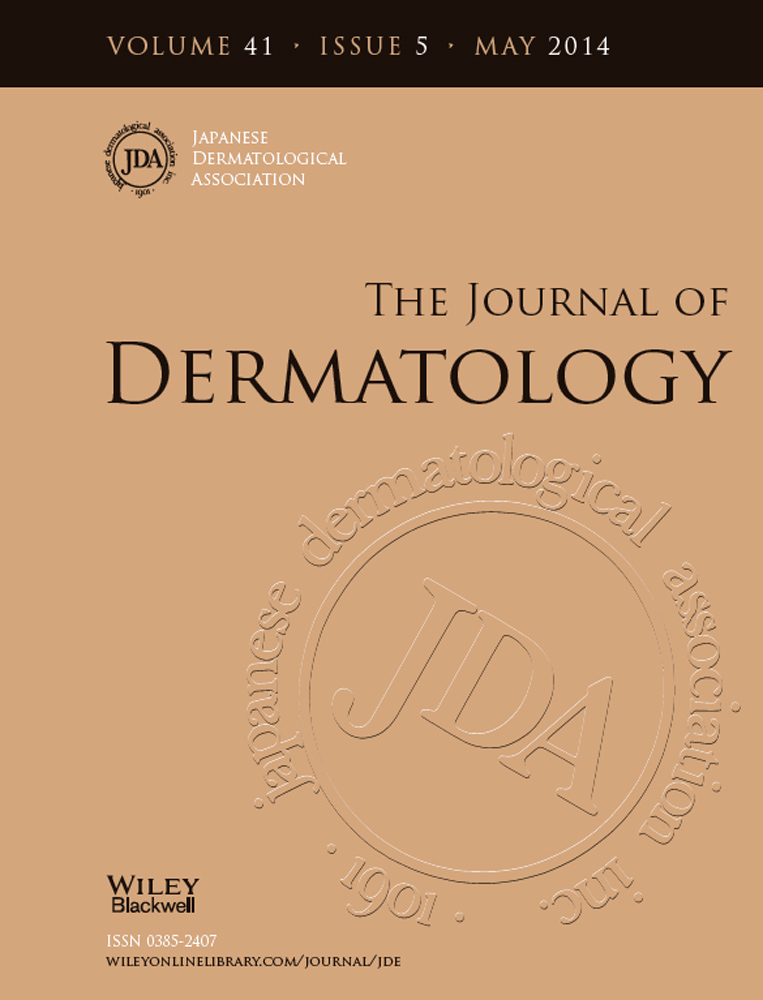miR-424 levels in hair shaft are increased in psoriatic patients
Abstract
Objective diagnostic markers have not been in clinical use for psoriasis. In this study, we investigated the levels of miR-424 in hair roots and hair shafts in psoriatic patients, and evaluated the possibility that miR-424 can be a biomarker of the disease. A single hair root and five pieces of hair shafts (~5 cm in length) were obtained from the non-lesional occiput of each individual of 26 psoriatic patients. Control hair samples were collected from nine normal subjects. Samples from 10 atopic dermatitis patients were also included as the disease control. miR-424 levels were determined by quantitative real-time polymerase chain reaction. Hair shaft miR-424 levels were significantly upregulated only in patients with psoriasis compared with normal controls and those with atopic dermatitis. By receiver–operator curve analysis of hair shaft miR-424 to distinguish psoriatic patients from normal subjects, the area under the curve was 0.77. However, relative miR-424 levels were not correlated with disease activity markers including disease duration, body surface area and Psoriasis Area and Severity Index. Hair root miR-424 was not useful for evaluating both diagnosis and severity of the disease. Our results indicated hair shaft miR-424 levels may be useful as a diagnostic marker of psoriasis.




